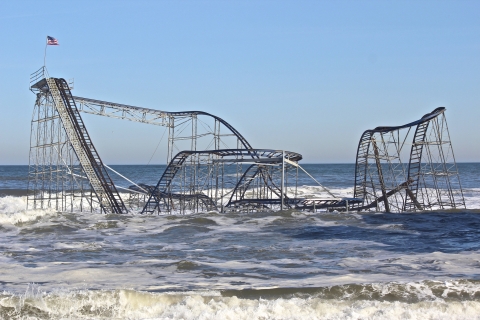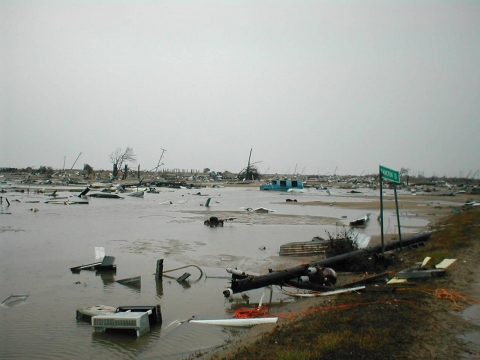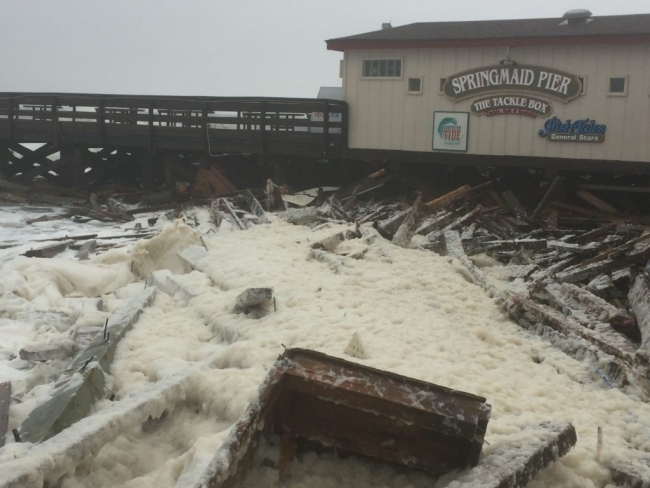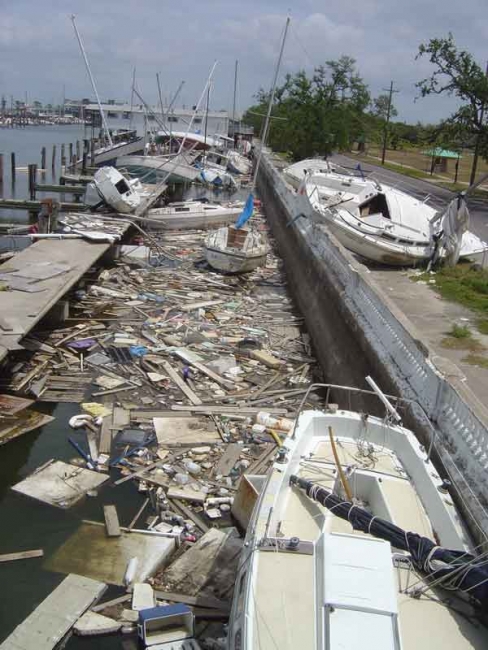When you think of marine debris, you likely think of items carelessly discarded and winding up in our waters. Although that is definitely one source, sometimes debris is created by events outside of our control. Severe storms and weather events often result in a large amount of marine debris. Although there are steps we can take to reduce the amount of storm debris, such as securing our belongings before the storm hits, debris is often an unfortunate and unavoidable side effect of severe weather.
The past couple months have been particularly tough for the Gulf of Mexico, Southeast and Caribbean regions that have been battered by hurricanes. These storms have resulted in an immense amount of damage and loss, with the long road to recovery just beginning for many areas. Marine debris is just one of many concerns following these storms.
So how do we address hurricane debris?
Though tropical storms and hurricanes cause significant quantities of marine debris and affect sea-side populations as well as coastal habitats, there are many priority efforts that occur right after a hurricane passes, such as ensuring the safety of those living in the impacted communities. While search and rescue and humanitarian responses are ongoing, the NOAA Marine Debris Program and other marine debris organizations gather critical information, maps and debris reports to start the long process of addressing the storm debris. Once debris response has begun, coordination between organizations and agencies is important. For many coastal states, the NOAA Marine Debris Program has facilitated the creation of Emergency Response Guides, which work to outline how this coordination should be implemented based on the resources of the organizations and agencies in that area. For instance, the Florida Marine Debris Emergency Response Guide was vital in assisting smooth coordination between groups in Florida when beginning response to debris from Hurricane Irma.
Before any debris can be removed, the resulting storm debris must first be assessed. Federal, state or local responders are tasked with assessing coastal impacts. They often conduct their assessments in the field but when that is not possible, they use tools such as aerial imagery and GIS applications such as NOAA’s Environmental Response Management Application. Once impacts are assessed, priority items for removal can be identified. Priority items include debris that is likely to pose a hazard, such as a sunken vessel in a port. Once this assessment process has concluded, work begins to create a strategy for removal.
Response to the impacts of severe storms such as hurricanes is complex and requires the dedication of many, many hardworking people both on-site and behind the scenes. Unfortunately, the response to hurricane debris and the removal of non-hazardous items can take years. Thankfully, our dedicated team and the many others involved in debris response are up to the task.





